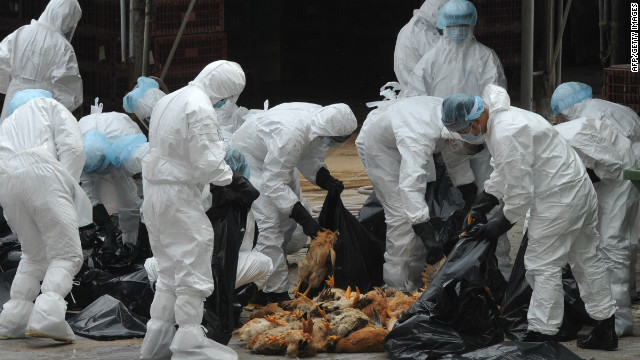Tag Archives: target
Global Economic Collapse – Why Hasn’t Obabma Prepped the U.S For Economic Doomsday
Why hasn’t Obama doomsday prepped the U.S. economy?

OK, here’s where we are right now, and it isn’t good:
1. Europe is in recession, and its financial crisis is growing worse. The bailout of Spain was a bust. Yields on Spanish bonds are now at their highest point of the crisis. Here’s looking at you Italy.
2. The sputtering U.S. economy may well be heading into another recession, and the approaching fiscal cliff is hardly helping confidence. It sure looks like nothing will be done on that front before the election.
3. Three-fourths of the BRICs—China, India, and Brazil—are all slowing. There go the emerging-market growth engines.
How to avoid a worsening of this already dire scenario? AEI economist John Makin thinks four steps are urgently needed:
1. Europe’s banking system must be stabilized to end runs from depositors withdrawing funds;
2. Europe must articulate clearly a framework for rapid evolution toward fiscal union;
3. The policy mix that includes additional fiscal stringency in return for rich loans to Europe’s periphery must be softened.
4. The ECB can help calm markets and reduce uncertainty by signaling its support of more accommodation, including a system of deposit insurance for European banks and could cut interest rates by fifty basis points and undertake another round of extra lending to ensure ample liquidity to banks.
I would add that Europe should be cutting taxes, not raising them.
But here’s the problem: As Makin notes, the odds of all that stuff happening are low, maybe a 50% chance depending on “Greece electing a coalition government willing to cooperate with Europe’s core countries to move toward a true monetary and fiscal union.”
So we have a) a 50% probability of a cooperative outcome from the Greek election on June 17, and b) conditional on that, a 50% probability that Europe will be able to quickly move forward to enact a more credible monetary and fiscal union.
Do the math. The joint probability of these events is 25% at best, “meaning there is only a one in four chance that the euro system will survive through the summer. Should the more likely outcome—an acute European financial crisis—emerge, the United States will be forced to act to prevent serious damage to its financial system and economy.”
So we have a 75% chance of a nightmare summer and autumn heading smack into the U.S. elections in November. The only question is how bad it will be. We don’t know what’s beyond the veil formed by the EU financial crisis, so any predictions about Obama vs. Romney are pretty much worthless.
But it’s hard to see how a financial shock would help the Obama campaign. He is the incumbent, after all. While the president cannot be blamed for the financial crisis, the Romney campaign could charge him with not doing everything possible to doomsday prep the U.S. economy for another global economic shock. It’s not like the EU debt crisis popped up in the past few weeks.
Why do we still have the highest corporate tax rate in the world?
Why did Obama nix the Keystone pipeline?
Why is the president still talking about raising taxes?
Why has the White House offered no long-term debt plan to reassure global markets?
Already, Romney has been hitting Obama for becoming obsessed with passing healthcare reform in 2009 and 2010 rather than boosting economic growth and job creation. Expect more of that.
And if the economy slows further—and if Obamacare is tossed by the Supreme Court—it’s a message that may powerfully resonate with voters.

CDC visitors exposed to deadly germs?
 Washington (CNN) — It’s a highly secured, sophisticated research lab studying deadly diseases such as bird flu, monkeypox, tuberculosis and rabies.
Washington (CNN) — It’s a highly secured, sophisticated research lab studying deadly diseases such as bird flu, monkeypox, tuberculosis and rabies.
It’s in a facility called Building 18, which cost taxpayers $214 million.
And now, the Biosafety Level 3 lab at the Centers for Disease Control and Prevention in Atlanta is also the subject of a congressional investigation after a potentially dangerous airflow leak at that lab, CNN has learned.
The leak occurred on February 16, when air flowed the wrong way out of a germ lab into a clean-air corridor, rather than through the powerful HEPA filter that cleans the air, congressional sources and CDC officials said. Visitors touring the facility were in the clean corridor when they observed a puff of air being pushed out from the lab through a slot in a door window.
CNN recommends: Deadly bird flu could become airborne
If experiments had been under way at the time of that air leak, experts say, unprotected visitors could have been exposed to deadly germs, although an epidemic would have been unlikely.
According to U.S. Rep. Michael Burgess, a Texas Republican and a medical doctor, the House Energy and Commerce Committee has asked the CDC for documents about that incident. The request came in the wake of a report on internal CDC e-mails about the incident, first reported by USA Today last week.
“The biggest concern was that there was a contingent of visitors who were walking through the building,” Burgess said. “And had one of those people been stricken or made ill or worse, obviously that would have been devastating.”
The lab handles small mammals such as rats, ferrets and mice as part of its experiments with pathogens, according to CDC officials. They say animals were in the lab at the time of the air leak, but they were secured in filtered cages.
CDC officials say the lab was clean, was not active at the time, and no one got infected.
“At no time during recent incidents featured in the media were CDC workers or the public in harm’s way,” agency spokesman Tom Skinner said. “This unique facility features multiple security layers specifically designed to protect workers and the public in the event of an incident.”
In a statement released to CNN, Burgess’ committee said, “We will actively work to find out if there are additional concerns or incidents associated with Building 18. Any anomaly or breach is of concern, and we will work to ensure the integrity of the facility is maintained and that our scientists are safe.”
There has been at least one other safety-related incident in that same building where February’s air leak occurred.
In 2008, it was discovered that a high-containment lab door was sealed with duct tape. That incident was first reported by the Atlanta Journal-Constitution and confirmed to CNN by Skinner.
Robert Hawley, former safety chief at the U.S. Army Medical Research Institute of Infectious Diseases, said the CDC has many safety layers in place at its labs. Hawley says researchers at the Biosafety Level 3 lab work in biosafety “cabinets” within the lab itself.
“Nothing is handled outside that cabinet,” Hawley said. “So they’re working with minute amounts of material, and the chances of aerosol are negligible.”
But there are questions about a possible cover-up.
In an internal e-mail, reported by USA Today, CDC biologist Kismet Scarborough said the centers “… will do anything … to hide the fact that we have serious problems with the airflow and containment in this whole building.”
CNN has not been able to independently verify that e-mail. But in response, Skinner said, “CDC will continue to take an open, transparent and inclusive approach to address any safety challenge in a manner that will ensure the safety of our workforce and the public.”
Skinner said the agency “intends to cooperate fully with Rep. Burgess and the committee to address any questions they may have about Building 18 at CDC.”
Mutant bird flu would be airborne

Mutant bird flu would be airborne, scientists say
Here’s what it takes to make a deadly virus transmissible through the air: as few as five genetic mutations, according to a new study.
This research, published in the journal Science, is the second of two controversial studies to finally be released that examines how the H5N1 bird flu virus can be genetically altered and transmitted in mammals. Publication of both studies had been delayed many months due to fears that the research could be misused and become a bio-security threat.
Although these particular engineered forms of H5N1 have not been found in nature, the virus has potential to mutate enough such that it could become airborne.
H5N1 influenza can be deadly to people, but in its natural forms it does not easily transfer between people through respiratory droplets, as far as scientists know. The World Health Organization has recorded 355 humans deaths from it out of 602 cases, although some research has questioned this high mortality rate.
The journals Science and Nature had agreed to postpone the publication of the two studies related to the genetically altered virus.
In January, the National Science Advisory Board for Biosecurity recommended that this research be published without “methods or details” that terrorists might be able to use for biological weapons. The board also said the data could assist in preparing for a possible future outbreak, however.
Then in February, the World Health Organization convened a meeting, at which the recommendation was to publish the studies – just not yet. In April, the National Institutes of Health chimed in, also recommending publication.
The first study to be published on the topic was in the journal Nature, and was led by the University of Wisconsin-Madison researcher Yoshihiro Kawaoka. It was released in May.
The other research group, which authored the new study in Science, was led by Ron Fouchier at the Erasmus Medical Center in Rotterdam, Netherlands.
Both Kawaoka and Fouchier’s groups created a mutated version of H5N1 that made it easier to transmit from mammal to mammal. They used ferrets because these animals are a good approximation for how viruses behave in humans.
Fouchier’s study examines what mutations would be necessary to get the virus airborne. He and colleagues found five mutations consistent in a form of the H5N1 flu virus that could spread among ferrets through the air.
None of the ferrets died after developing the flu, the researchers said.
In a separate analysis, researchers looked at the likelihood that an airborne avian flu virus would evolve on its own from the H5N1 currently found in nature.
This study, also published in Science this week, looked at nearly 4,000 strains of influenza virus and frequently found two of the five mutations that appear to be involved in airborne transmission. These two mutations have been found in viruses from both birds and humans, although not in naturally-occurring H5N1 strains.
Derek Smith of the University of Cambridge, who co-authored that study, said at a press briefing that it’s possible that only three mutations are necessary for the virus to evolve.
Smith’s group also did mathematical modeling to look at whether the other mutations could evolve when the bird flu jumps to a human or other mammal.
“We find that it is possible for such a virus to evolve three mutations within a single host,” Smith said during the press call.
If it takes four for five mutations to become airborne, that would be more difficult – but it’s unclear just how likely it would be, Smith said.
While the Nature study looked at how a bird flu virus could become airborne through mutations and re-assortment with other viruses, the latest research in Science suggests mutations alone could do the trick.
Dr. Anthony Fauci, director of the National Institute of Allergy and Infectious Diseases, told reporters that the benefits from the Science study, in terms stimulating ideas and pursuing ways to understand the transmissibility, adaptability and pathogenesis of the virus, outweigh the risks that someone will use the data for nefarious purposes.
“Does that mean that there’s no risk? No, of course not. I can’t tell you at all
that there’s no risk. But the benefits in my mind outweigh the risks,” he said.
Making the research available generally will hopefully spark input on this topic from researchers in a wide variety of fields, he said.
It is technologically possible to create vaccine based on the genetic code of a flu virus strain including this one, researchers said. Several companies are already making H5N1 vaccines.
Research is ongoing to accelerate the amount of vaccine doses available by using adjuvants, which are agents that modify the effects of vaccines, Fauci said. There is also work ongoing into using computational sequencing to anticipate every possible influenza strain that could emerge, such that a databank could be established to prepare for the outbreak of any one of them, he said.
“Right now we’re in a much, much better position than we were when we had vaccine available after the peak of the 2009 H1N1 two years ago,” Fauci said.
The Walking Dead Season 3 Spoilers and Photos – MERLE IS BACK
Warning: The following contains spoilers for the third season of The Walking Dead.
If the promise of the Prison, The Governor and Michonne wasn’t enough to keep fans of The Walking Dead salivating for the third season, new photos from the set of the AMC drama reveal the return of a long-absent character to further complicate the lives of Rick Grimes and the other survivors.
As you probably guessed, that character isn’t tormented widower Morgan Jones, but rather Merle Dixon (played by veteran actor Michael Rooker), the racist meth addict who disappeared in the third episode of Season 1 (“Tell It to the Frogs”), leaving only his dismembered hand and a trail of blood to remember him by. Sure, he cropped up again last season in a hallucination to taunt his injured brother Daryl (Norman Reedus), but that hardly counts. In the third season, it’s the real Merle Dixon, missing hand and all.
The first set photo shows Rooker wearing a bayonet where his right hand used to be; undoubtedly, Merle has dreams of sinking that blade into Rick and T-Dog, who left him handcuffed on the rooftop of that Atlanta department store as walkers overran the building (brother Daryl is probably on the stabbin’ list, too). Note that the vehicle appears to be the same one David Morrissey’s Governor is shown standing beside in the official image released last week, suggesting that Merle made his way to Woodbury after stealing the survivors’ truck in Season 1. Early speculation fell on Merle becoming The Governor, so having him allied with the bloodthirsty dictator is perhaps the next-best scenario. What a nice surprise for Rick & Co.
The second photo is significantly cheerier, showing a smiling, two-handed Rooker signing an autograph for a young fan. It’s probably the same expression Merle will have when he reunites with Rick, T-Dog and Daryl. Okay, probably not.
The Walking Dead returns in October on AMC.


